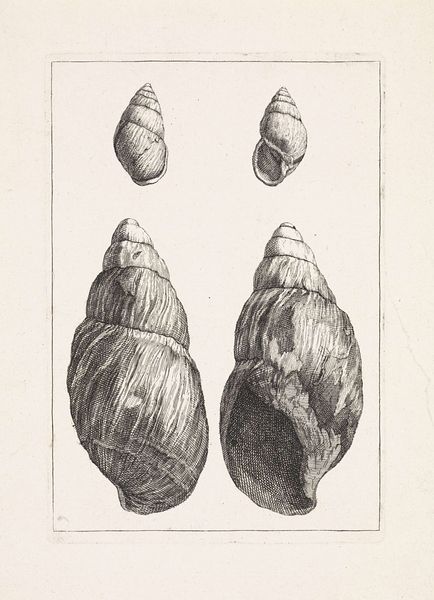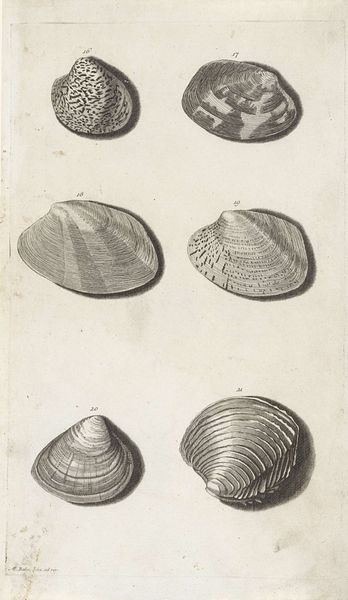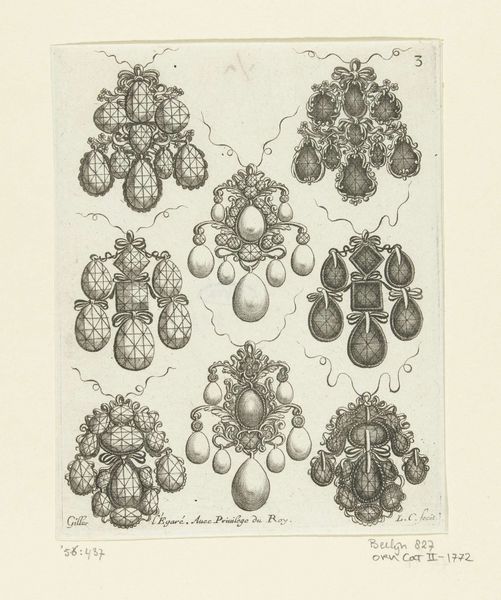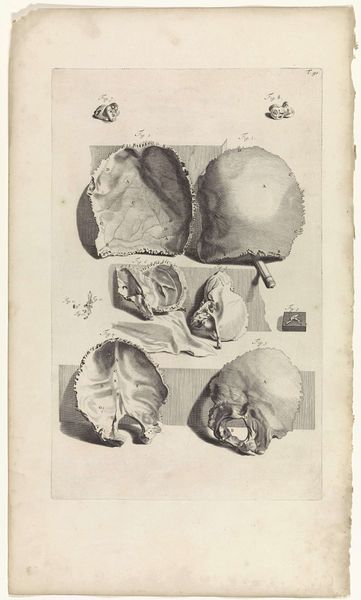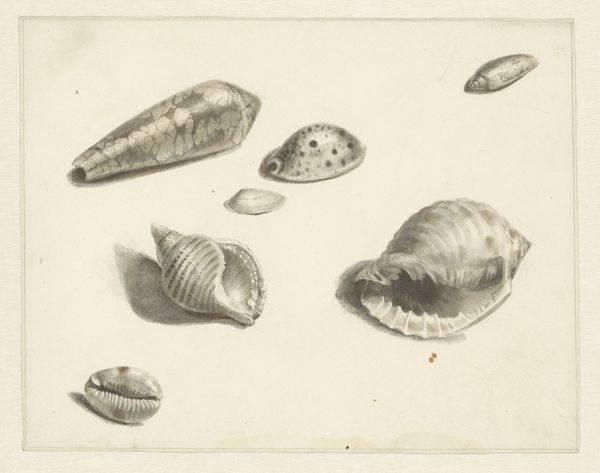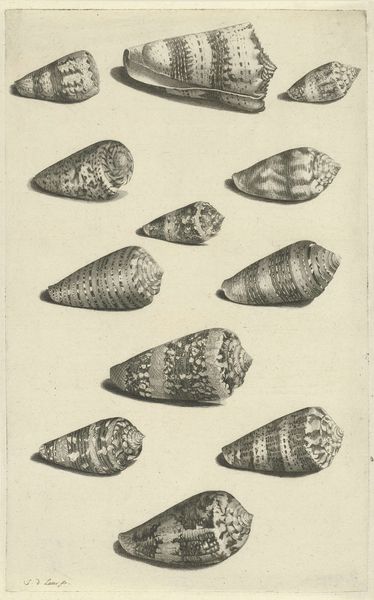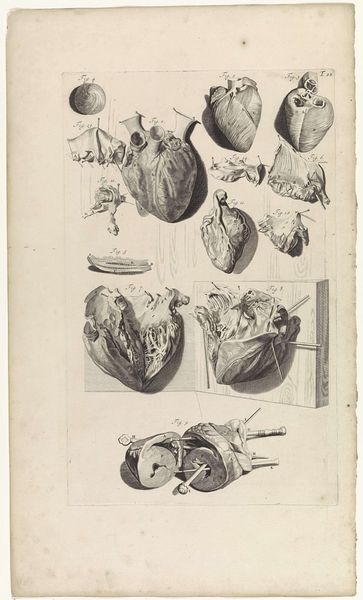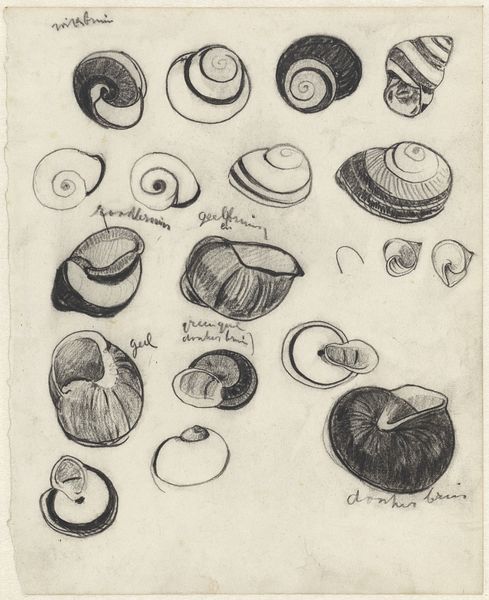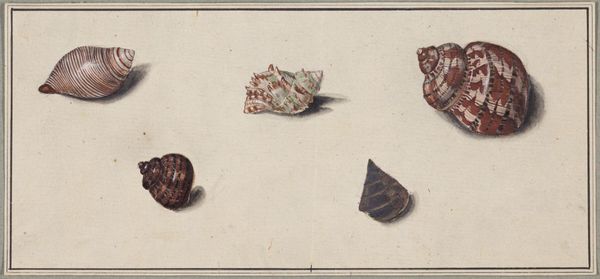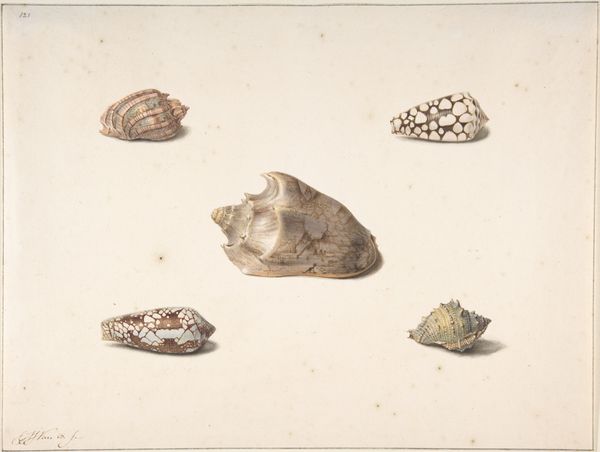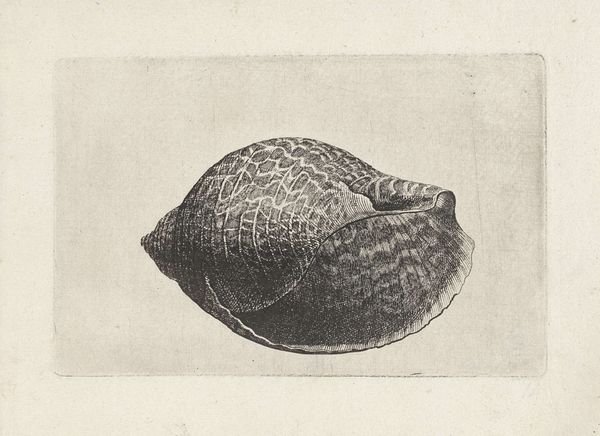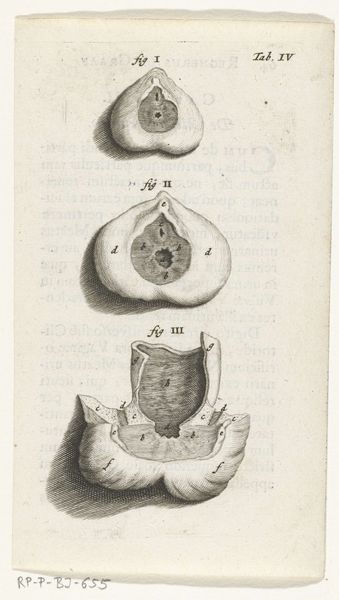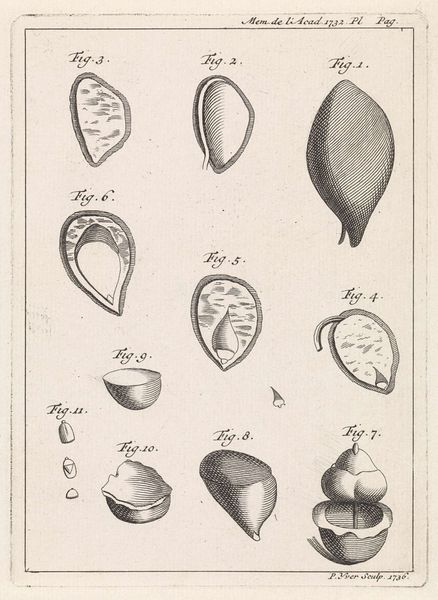
drawing, paper, ink, engraving
#
pencil drawn
#
drawing
#
baroque
#
pencil sketch
#
paper
#
ink
#
pencil drawing
#
sketchbook drawing
#
portrait drawing
#
academic-art
#
engraving
Dimensions: height 316 mm, width 177 mm
Copyright: Rijks Museum: Open Domain
Editor: Here we have "Negen schelpen," or "Nine Shells," made between 1705 and 1816 by an anonymous artist. It’s an engraving in ink, pencil and paper, of, well, nine shells. They're arranged in a grid, and each one is rendered with incredibly fine detail. It makes me think of early scientific illustration, with this blend of precision and artistry. How would you interpret this work, focusing on its artistic merits? Curator: This engraving presents an intriguing formal study. Note the artist’s acute attention to texture, achieved through the precise application of line. Consider how the varying densities of hatching and cross-hatching model the curvature of each shell, creating a tangible sense of volume. Do you see how each shell becomes a self-contained exercise in tonal variation? Editor: I do. And the light seems to almost emanate from within the shells, despite the limited palette. It's more than just a record, there is some added depth of illumination that highlights the shape. Curator: Precisely. The artist manipulates the formal elements—line, tone, composition—to transcend mere representation. Observe also the compositional choices, which echo Baroque sensibilities. The artist plays with visual weights and counterweights within a geometric, gridded framework to explore symmetry and asymmetry, order and variation, all at once. What do you think of the effect achieved? Editor: I suppose it gives it both a sense of controlled observation, like you said, while keeping things visually engaging through differences in shadow and shape. Are the empty spaces equally important in understanding the relationship between these diverse, but similar shells? Curator: Indeed. The negative space acts as a visual buffer, allowing each shell to be appreciated individually while also contributing to the overall structure. Notice how this structured approach emphasizes that no shell overshadows another, and allows one to consider each of them as part of a whole. What are your thoughts? Editor: It’s fascinating how much can be gleaned from such a seemingly simple subject through attention to its formal qualities. I appreciate the insight into seeing the play of lines and tones, I understand how important an individual component becomes to seeing the total design. Curator: Indeed. A close look at form reveals a world of meaning.
Comments
No comments
Be the first to comment and join the conversation on the ultimate creative platform.
